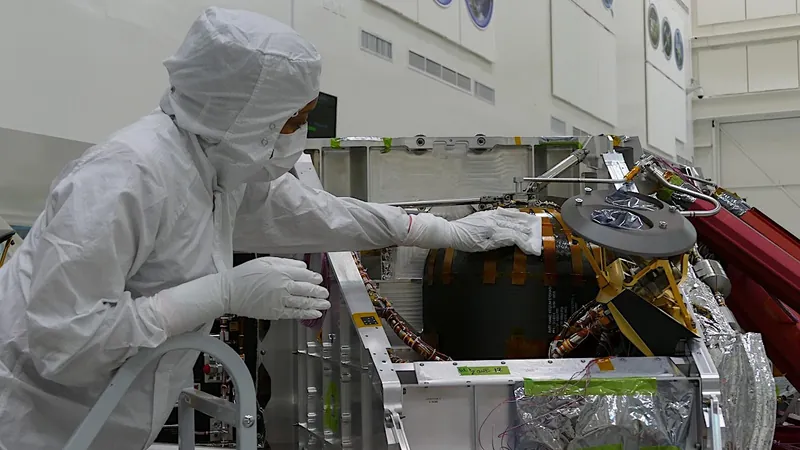
Mars Microbe Discovery Sparks Exciting Biotech Possibilities!
2025-01-03
Author: Sarah
Groundbreaking Discovery of Novel Bacterial Strains
In a groundbreaking discovery during microbial surveillance at the Mars 2020 spacecraft assembly facility, scientists identified two novel bacterial strains with potential commercial applications. These unique strains, named Neobacillus driksii, are thought to be capable of producing lasso peptides, which are short, circular proteins known for their powerful antimicrobial properties.
Taxonomic Approach and Genetic Analysis
Utilizing a comprehensive polyphasic taxonomic approach, researchers conducted whole-genome sequencing and phylogenomic analyses on the two strains (179-C4-2-HS and 179-J1A1-HS) recovered from cleanroom floors. They found a close genetic relationship between these strains and two other strains sourced from an Agave plant (AT2.8) and wheat-associated soil (V4I25). Astonishingly, all four strains boasted a remarkable 16S rRNA gene sequence similarity exceeding 99.2%, yet displayed significant genetic divergence from Neobacillus niacini, illustrating the unique evolutionary path of N. driksii.
Resilience and Environmental Adaptation
Notably, N. driksii demonstrates remarkable resilience, thriving in a variety of challenging environmental conditions, with optimal growth at temperatures ranging from 4°C to 45°C and tolerating a pH from 6.0 to 9.5. The major fatty acids present in the cells include iso-C15:0 and anteiso-C15:0, while specific polar lipids have been characterized, giving insights into the microbe's cellular structure.
Potential Applications of Lasso Peptides
What makes this discovery even more intriguing is the identification of genes responsible for the biosynthesis of lasso peptides across all N. driksii strains. These peptides are not only vital for antimicrobial defense but also play crucial roles in enzyme inhibition and cellular communication. The findings suggest strong potential for their application in various industries, including healthcare, pharmaceuticals, semiconductor manufacturing, and aerospace.
Bioactive Gene Clusters and Environmental Benefits
Moreover, the genomic analysis unveiled bioactive gene clusters that might generate nicotianamine-like siderophores. These natural compounds are incredibly useful in bioremediation efforts to cleanse heavy metal-contaminated environments, incentivizing plant growth by enhancing iron uptake, and even managing iron overload conditions in medical settings.
Limitless Implications for Biotechnology
As researchers delve deeper into the genetic capabilities of N. driksii, the implications for biotechnology seem limitless. With the potential to harness these microbial properties for innovative applications, this discovery emphasizes the critical intersection between astrobiology and commercial biotechnology.
Conclusion and Future Outlook
Astrobiologically intriguing and commercially viable, the findings from the Mars 2020 assembly cleanroom are leading the charge toward a new frontier of microbial utilization in a variety of sectors. Stay tuned as we closely monitor developments from this exciting research!




 Brasil (PT)
Brasil (PT)
 Canada (EN)
Canada (EN)
 Chile (ES)
Chile (ES)
 Česko (CS)
Česko (CS)
 대한민국 (KO)
대한민국 (KO)
 España (ES)
España (ES)
 France (FR)
France (FR)
 Hong Kong (EN)
Hong Kong (EN)
 Italia (IT)
Italia (IT)
 日本 (JA)
日本 (JA)
 Magyarország (HU)
Magyarország (HU)
 Norge (NO)
Norge (NO)
 Polska (PL)
Polska (PL)
 Schweiz (DE)
Schweiz (DE)
 Singapore (EN)
Singapore (EN)
 Sverige (SV)
Sverige (SV)
 Suomi (FI)
Suomi (FI)
 Türkiye (TR)
Türkiye (TR)
 الإمارات العربية المتحدة (AR)
الإمارات العربية المتحدة (AR)